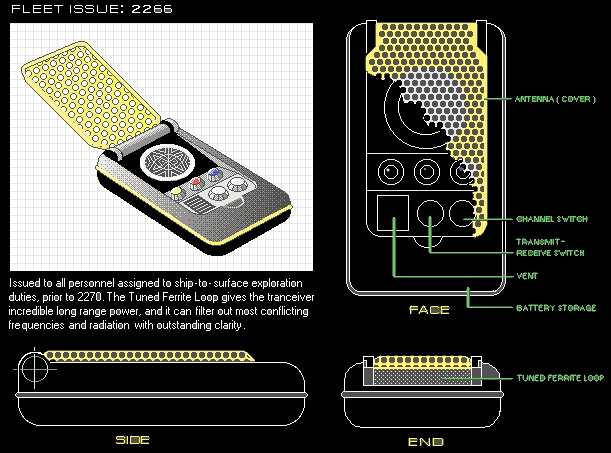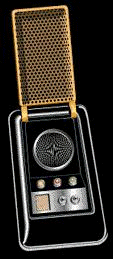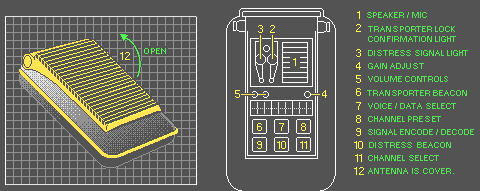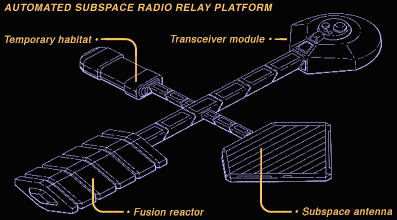Background
The personal communicator is constructed of a crystalline composite of silicon, beryllium, carbon-70, and gold. Communicators provide voice transmission from a planetary surface to an orbiting spacecraft, and between members of a landing party. Communicators also provide a means for a ship's transporter system to determine the exact coordinates of a crewmember for transport back to the ship. Early versions of the communicator were compact handheld units with a flip-up antenna grid. Starfleet later briefly used wrist communicators, but the more recent units have been incorporated into the Starfleet insignia worn on each crewmember's uniform.
Main components
The heart of the communicator is the STA (Subspace Transceiver Assembly). This incorporates a low-power subspace field emitter and an analogue to digital voice encoder. The STA is also used in other devices such as the PADD and tricorder. Voice inputs are received by a monofilm pickup microphone. All Starfleet communications are encrypted and the voice signals are modified by the encryption assembly. The encryption algorithms used by Starfleet are changed on a random schedule.
Power
is provided by the communicator's sarium krellide power cell, which provides
enough power for two weeks of normal use. Communicators are charged through
EM induction.
Communication
between two personal communicators is limited to approximately 500 km,
starship's communication systems are able to enhance signals, giving a
ground to ship range of approximately 75,000 km. Communicators require
a line of sight. Range will improve if the planet's magnetic field is less
than 0.9 gauss or mean geological density is less than 5.56 g/cc.
Security
For
security purposes the communicator can identify it's user bio-electrical
field and temperature profiles using it's built in dermal sensor array.
If another crewmember tries to use the communicator without security override
authority, the communicator will not activate. During normal situations,
security codes are changed every five days. In emergencies the codes change
at least once every 24 hours.
.







Subspace
relay stations are used to stop signal degradation, and allow long distance
messages to be sent across space. These stations are placed at 20 light
year intervals, as subspace messages can only travel about 22.65 light
years without "boosting". About 500 new relay platforms are placed each
year, due to the vast space exploration. This diagram shows this kind of
platform: